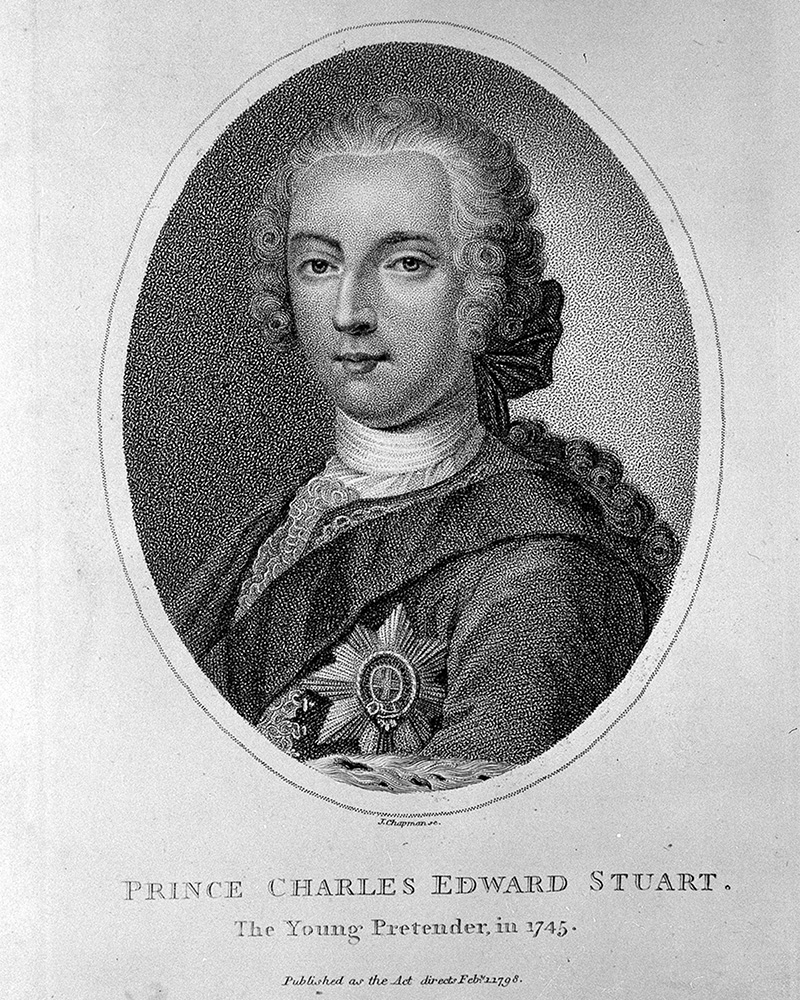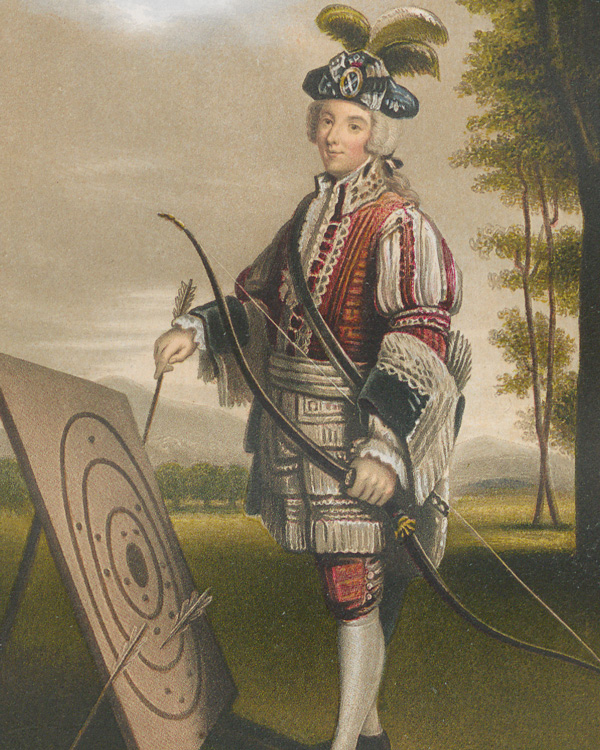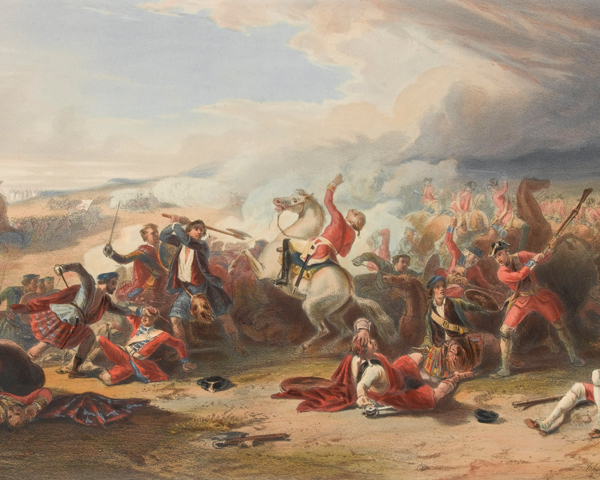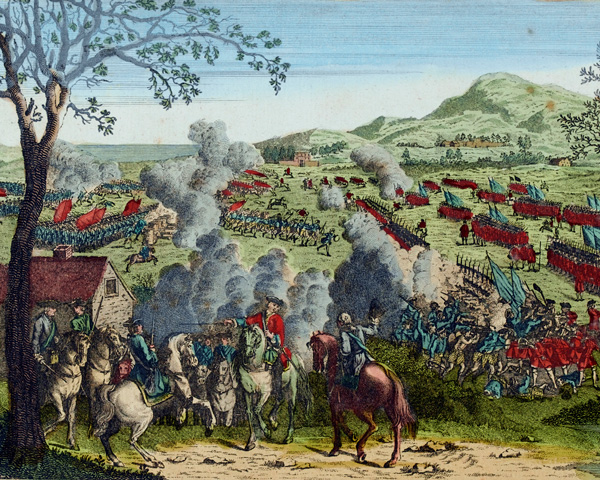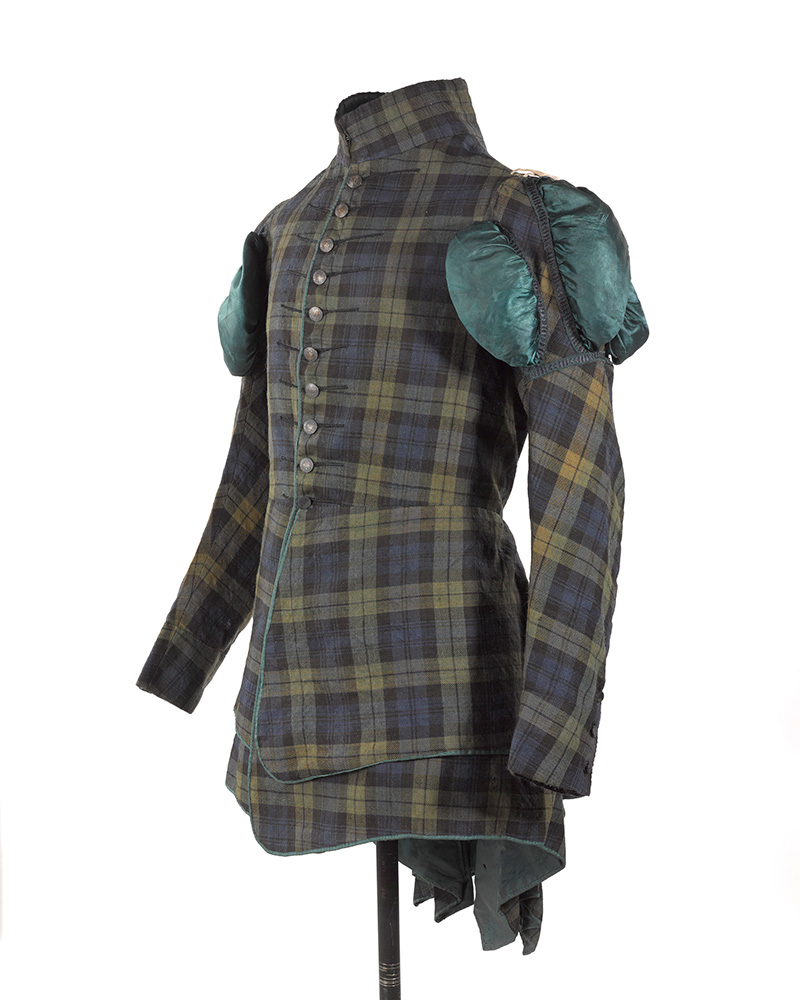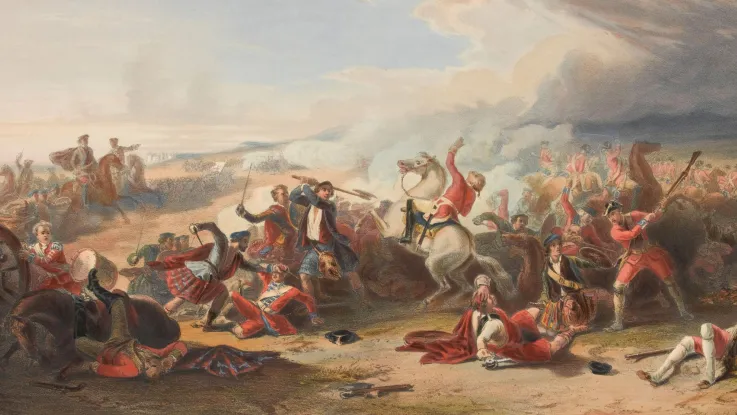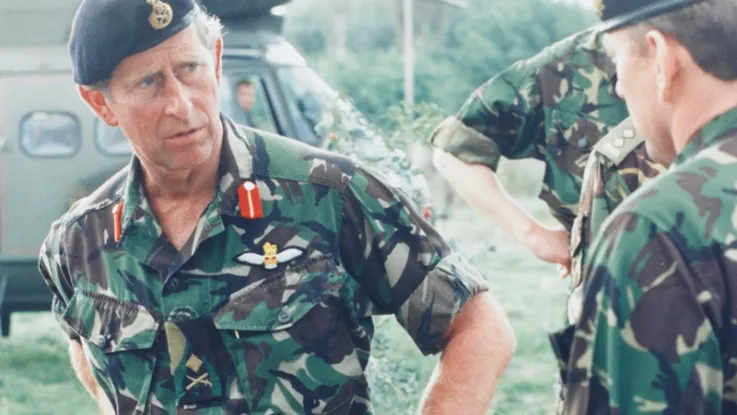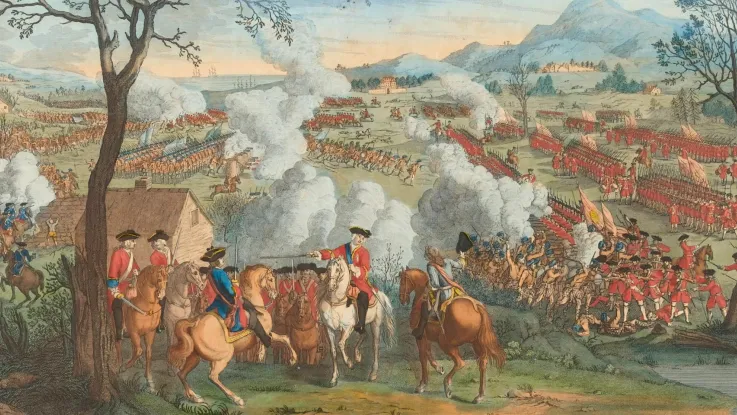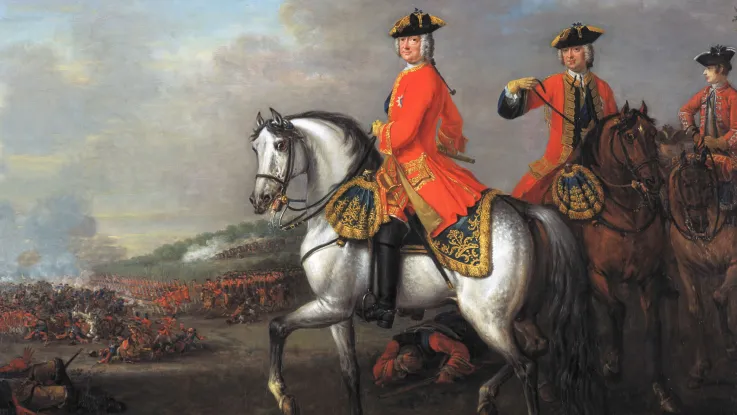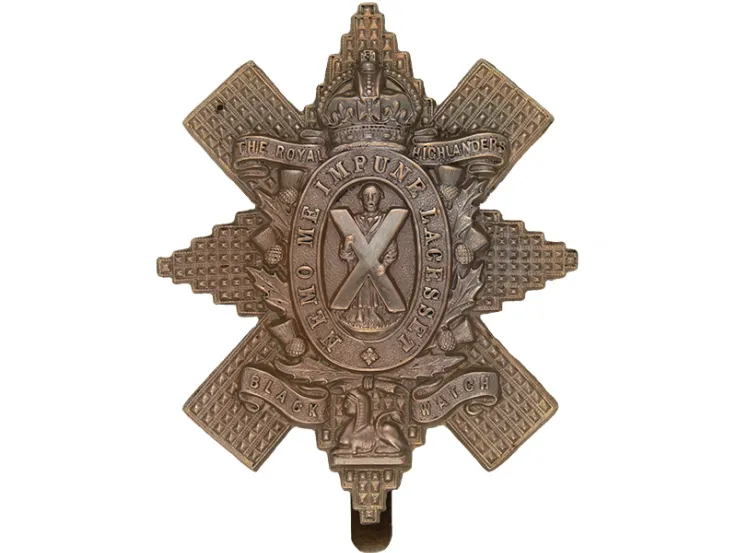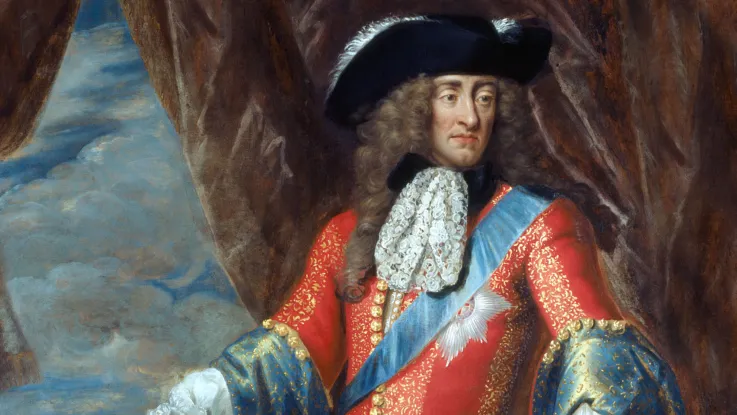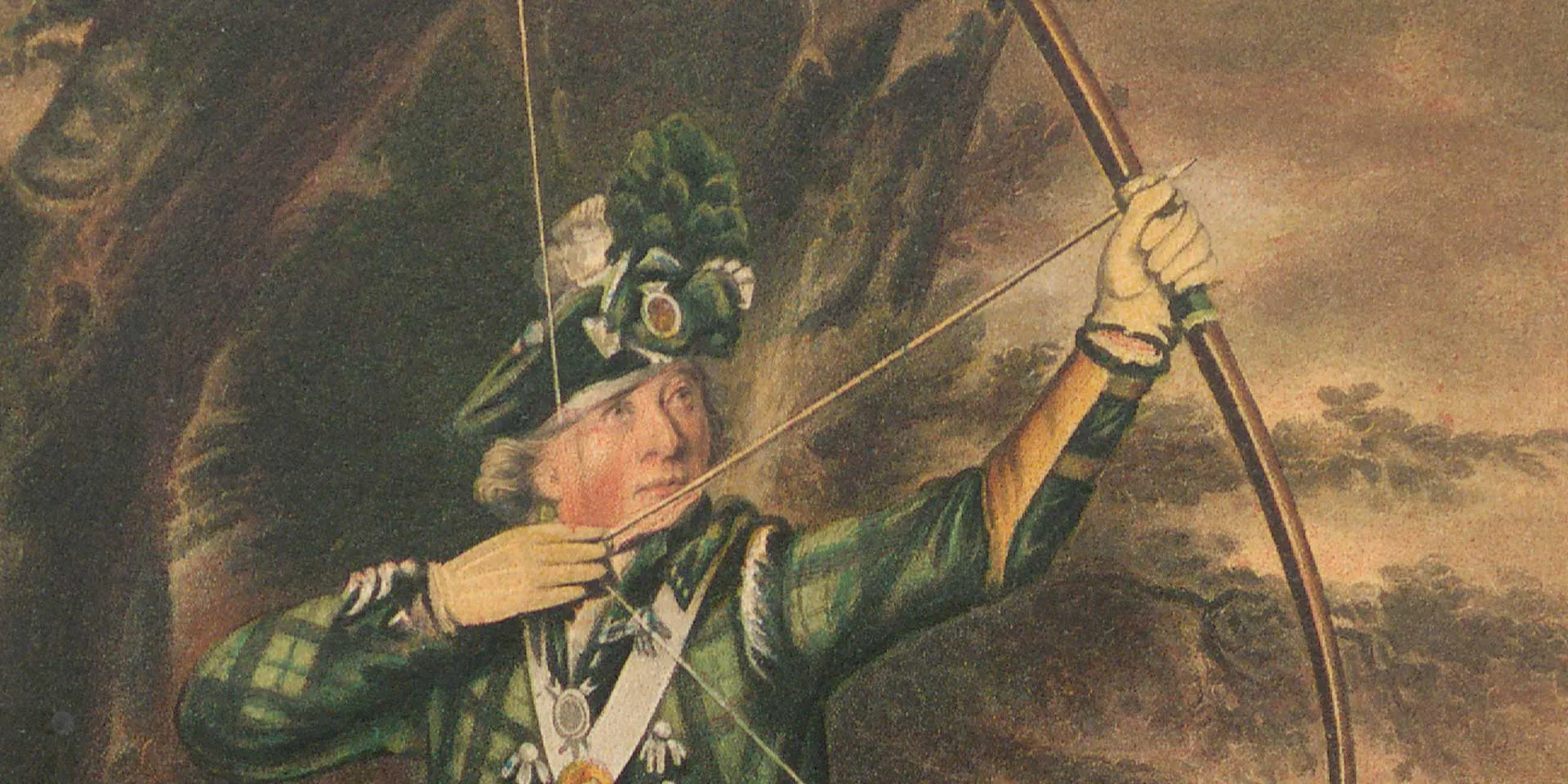
Dr Nathaniel Spens by Sir Henry Raeburn, from James Balfour Paul’s ‘History of the Royal Company of Archers’ (1875)
Origins
The organisation that became known as the Royal Company of Archers was originally formed in 1676 as a private archery club. The following year, it gained the patronage of the Scottish Privy Council, which provided a prize that company members competed for.
In 1704, the Company petitioned Queen Anne for a Royal Charter, which allowed its members to assemble under the old dispensation of 'wapinschaw' (or ‘weapon-showing’) without interference from civil magistrates. In effect, this gave the hundred men of the Royal Company of Archers the status of a paramilitary force.
Jacobite sympathies
In 1714, King George I of the House of Hanover succeeded to the throne, despite competing claims by the exiled Roman Catholic branch of the Stuart family. The Royal Company's historic allegiance to Queen Anne meant that its loyalty to the British government could no longer be taken for granted.
Suspicions of pro-Stuart, or Jacobite, sympathies were only heightened when the Royal Company adopted tartan attire around this time.
The ‘45
During the Jacobite Rebellion of 1745 - led by Prince Charles Edward Stuart - the Royal Company of Archers’ captain general was the 5th Earl of Wemyss, a well-known Jacobite. His son, Lord Elcho - also a Royal Company member - took the field as a senior officer in the army of ‘Bonnie Prince Charlie’.
To make matters worse, other members of the Royal Company expressed open support for Prince Charles Edward during the six weeks he was in occupation of Edinburgh, following his victory at the Battle of Prestonpans.
A suspect organisation
After the final defeat of the Jacobite cause at the Battle of Culloden in 1746, the Royal Company of Archers was still viewed with suspicion.
For many years, its members conducted themselves with greater caution. But towards the end of the 18th century, when the Jacobite threat had all but vanished, the atmosphere lightened. For example, the ban on making or wearing tartan clothes, enacted in the wake of Culloden, was lifted in 1782.
Royal bodyguard
Shortly afterwards, the Royal Company subtly reconciled itself to the House of Hanover. It adopted for its coat the green Government tartan, worn most famously by the 42nd Royal Highland (or Black Watch) Regiment.
This was a clever move and meant that when, in 1822, King George IV became the first Hanoverian monarch to visit Scotland, the Royal Company claimed the right to act as his personal bodyguard, even though all its privileges had previously been conferred by a Stuart monarch.
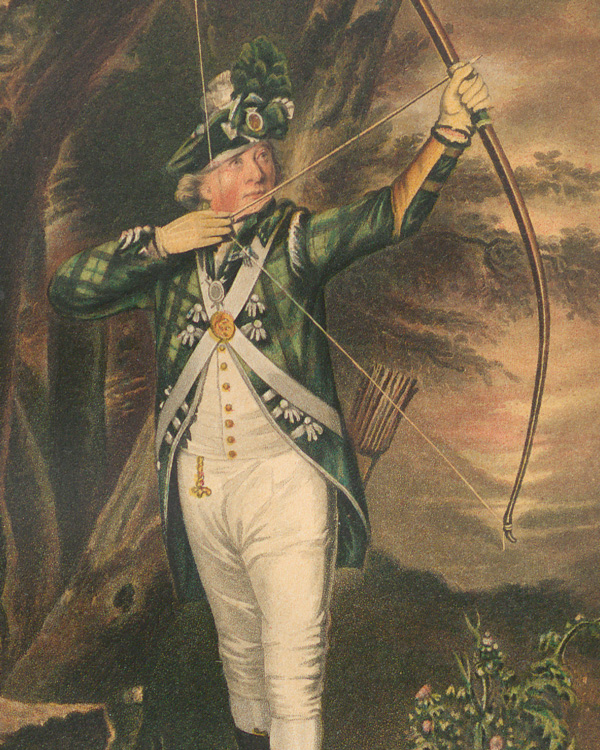
The uniform c1790, from James Balfour Paul’s ‘History of the Royal Company of Archers’ (1875)
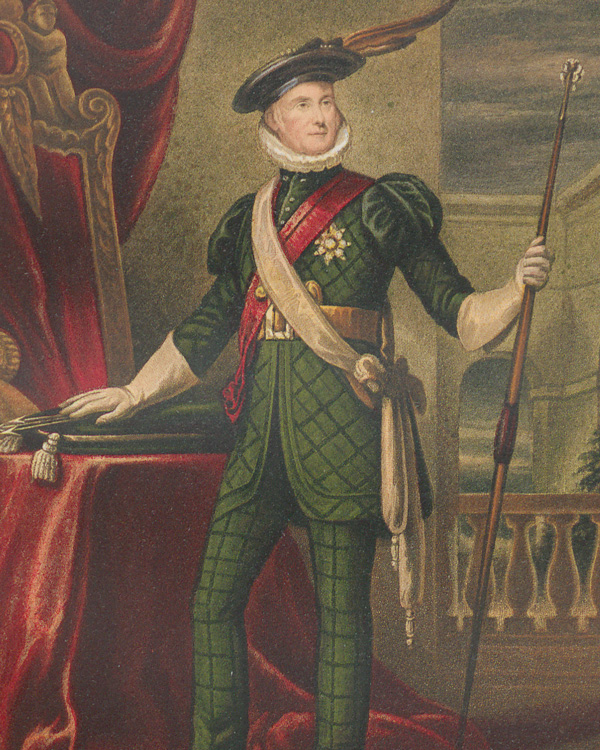
Lord John Hopetoun wearing the uniform of 1822, from James Balfour Paul’s ‘History of the Royal Company of Archers’ (1875)
Further recognition
Such boldness paid off. The Royal Company's captain general at the time - John, 4th Earl of Hopetoun, a general who had served in Peninsular War (1808-14) - proved a persuasive advocate. And George IV was graciously pleased to have the Royal Company of Archers as his escort while in Edinburgh.
Ever since, the Royal Company has continued to perform this role during royal visits to Scotland. Its full title later became The King’s Bodyguard for Scotland: Royal Company of Archers. From 1905 onwards, the names of its officers have appeared in the official 'Army List'.
Uniform
King George IV’s visit to Edinburgh in 1822 was stage-managed by the novelist and great populariser of all things Caledonian, Sir Walter Scott. Scott was himself a member of the Royal Company of Archers and he is thought to have had a hand in designing the new uniform worn for the occasion.
Boasting a mixture of medieval and Elizabethan motifs, the uniform could well have been inspired by one of Scott’s Gothic novels. It included puffed upper sleeves and was off-set with white gauntlets and a ruff round the neck.
‘The spirits of the old Jacobite members might well have stood aghast, if they could have beheld their successors guarding into Edinburgh the carriage of a King of the house of Brunswick [ie Hanover].’Historian of the Royal Company of Archers — 1875
A perfect metaphor
The coat may be extravagant, but in some ways it is a perfect metaphor for the change that saw a disaffected Scotland become an enthusiastic coadjutor in the British state.
The Royal Company of Archers transferred its allegiance from one royal dynasty to another. And the sheer exuberance of its costume is testament to the unabashed nature of this transformation.

